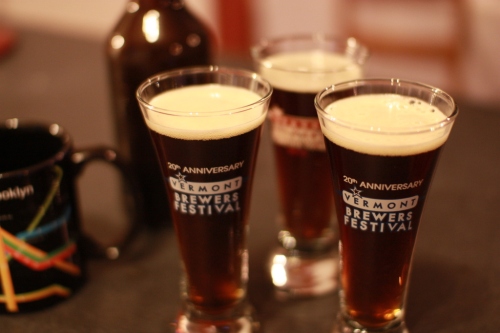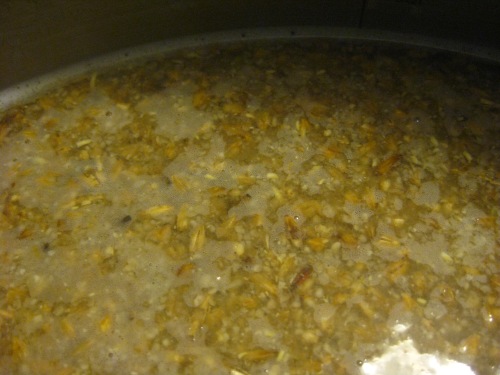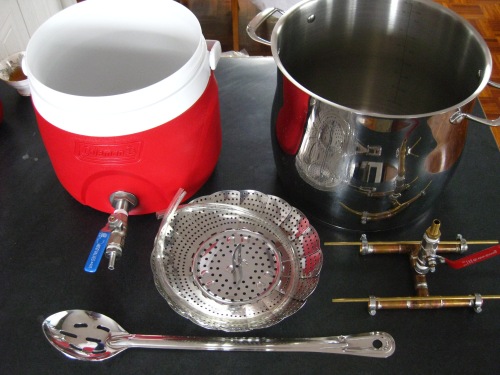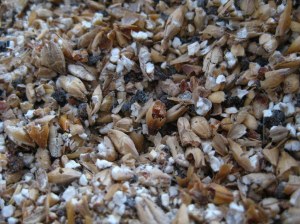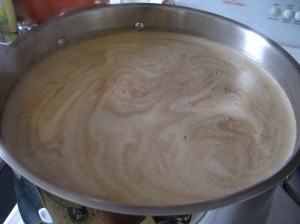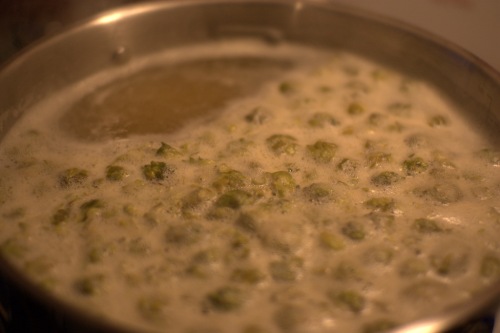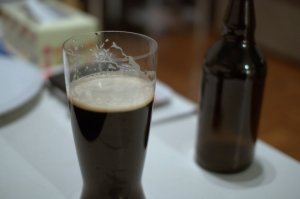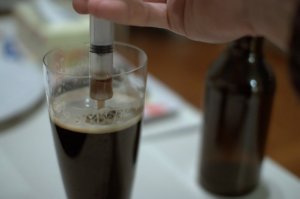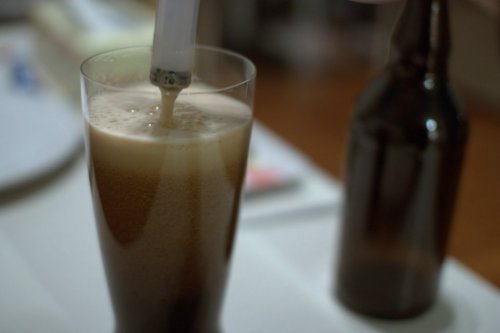This batch was an experiment in making a higher gravity beer using an iterated mash. The idea is fairly simple: divide the grain bill in two, mash and lauter the first half as usual, then mash the second half of the grain bill in the wort you just extracted.
The recipe I settled on is based on Jamil Zainasheff’s recipe in Brewing Classic Styles, but I made some changes after reading more about the style and having a nice example from Les Trois Mousquetaires. I ended up with an emphasis on English grains, the addition of a little smoked malt, and a choice of higher alpha hops (mostly to use what was already in my freezer).
The two base malts and the darker grains were crushed in separate batches to make mash pH adjustment a bit easier. This way, I could run a thick first mash with just the base malts, crystal 80, and smoked malt, which shouldn’t require any pH adjustment, and then use the roasted grains in the second mash along with the rest of the base malt and some calcium carbonate to hold pH.


Iterated mashing is a time intensive process. Thirty minutes for the the first mash (it’s only necessary to give enough time for starches to gelatinize and dissolve since conversion can also happen in the second mash), about thirty minutes for lautering, sixty minutes for the second mash during which the lauter tun can be rewashed, and another thirty minutes of lautering. Below, you can see the thick and starchy first mash right after dough in, and the thin sugary second mash with the darker grains in it, right before lautering.


The mash temperature was kept around 67.5C in both the first and second mash. Just over 8L of wort was collected from the first mash, which meant the second mash was very thin, at 4.2 L/kg. The lautering process involves transferring the mash from the mash tun (aka brewpot) to the lauter tun (aka cooler) which adds even more time to the process.


The point of all the extra time and energy spent mashing and lautering is to produce a high gravity preboil wort. The standard way to brew a high gravity beer is to mash a lot of grain and boil for longer to concentrate the wort, but that requires a large mash tun and boil pot. The iterated mash method needs neither of these, but requires extra time during the mash, and some sacrificed efficiency (not much when compared to the standard method). Extract efficiency was measured at 64%, which is right on what I was expecting.


Three days before brew day I made a starter to try to reach the optimal cell count before pitching. Note that the cell count estimate was based on the ‘intermittent shaking’ model at yeastcalc.com, so this estimate is probably substantially less accurate than usual. After a day and a half of growth, the starter went into the fridge for 24 hours, then warmed up for 8 hours before being decanted and pitched.


As with the last batch, there were significant trub losses from the whole leaf hops, so only 7.8L of 1.078 wort made it into the fermentor.

Powrót Maji Baltic Porter
Recipe Specifics
Batch Size: 9L
Boil Time: 70 min
Estimated OG (brewtoad): 1.078
Measured OG: 1.078
Estimated FG: (brewtoad) 1.018
Measured FG: 1.024
Estimated IBU (brewtoad): 31
Estimated SRM (brewtoad): 36
Estimated Extract Efficiency: 65%
Measured Extract Efficiency: 64%
Grain Bill
1600g Maris Otter (Baird’s)
1600g Munich I (Weyermann)
200g Smoked Malt (Weyermann)
200g Crystal 80 (Baird’s)
200g Pale Chocolate (Fawcett)
100g Carafa Special III (Weyermann)
Mash Schedule
Mash I (1700g MO/Munich Mix, 200g Smoked, 200g Crystal):
Rest for 30 min at 67.5C, 2.5L/kg, drain then sparge to 8L.
Mash II (1500g MO/Munich Mix, 200g Chocolate, 100g Carafa):
Rest for 60 min at 67.5C, 4.2L/kg, drain then sparge to 13.3L.
Hops
10g Magnum 10% AA @ 60 min
15g Northern Brewer 10% AA @ 15 min
Yeast
WLP001 California Ale @ ~15 Million Cells/mL
Fermentation Notes:
08.01.14: Yeast pitched, temperature at 18C. Airlock active after a few hours.
08.01.14: Aerated once more 8 hours after pitching, temp at 18C.
09.01.14: Blowoff very active with an inch of krausen, temp at 18.5C.
10.01.14: Blowoff very active with two inches of krausen, temp at 18.5C.
10.01.14: Water bath removed late at night, ambient temp set to 20C.
15.01.14: Blowoff activity slow, bit of dense krausen, ambient temp to 19C.
25.01.14: Bottled 7.3L with 55g of table sugar (2.7 Volumes).
